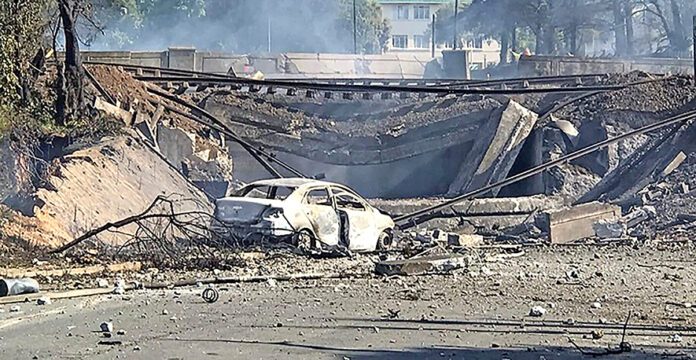The Department of Transport is concerned about the risks posed by the low-lying bridges, after an ugly explosion on Christmas Day claimed the lives of 38 victims when a truck transporting liquefied petroleum gas got stuck under it and exploded.
Yesterday, the deparment clarified that all the country’s road infrastructure was the responsibility of the government and that local authorities are empowered to act as prescribed in the national transport regulations.
This follows questions over which tier of government should take responsibility for the accident. Department spokesperson Lwaphesheya Khoza said road infrastructure was a public asset and, therefore, “all tiers of government” take
responsibility for all public road infrastructure.
“The national, provincial, local road authorities plan, fund, construct, maintain road infrastructure,” she said.
She said they also manage, regulate road operations and road safety, and that the budgets for roads administration were raised through direct and indirect taxes, or user charges appropriated to national, provincial and local government by the national treasury.
“However, the various road authorities in South Africa have an obligation to plan, design, construct and maintain the road network, to protect the public investment in the road infrastructure, to ensure the continued functionality of the transportation system and to promote the safety of traffic on the road network.
“All road authorities are required to develop strategic road asset management plans as per the requirements of the TMH22 Asset Management Manual, which provides a standard planning template with guidance and methodologies. It establishes a uniform and integrated system in which the asset conditions are collected and reported on to ensure an equitable funding distribution so that the maintenance and rehabilitation of the road infrastructure is ensured.
“It is expected that the movements of tankers are always under surveillance. In the case of the Boksburg accident, investigations are underway. Therefore, we suggest we await the outcome of the investigation report,” she said.
The requirements for road signage and road markings were prescribed in the Road Traffic Regulations, and the details are in the South African Road Traffic Signs Manual.
The Road Freight Association CEO Gavin Kelly said: “The bridges that have been problematic have been shared with members of the RFA. Members also requested information on routes that are unknown to them. It is important that correct, legible and visible signage is erected where bridges could pose a problem to any vehicles that are higher than 3.5m. Most bridges within local authorities have the challenge relating to the approach and departure angles, and this needs to be corrected.
Follow @SundayWorldZA on Twitter and @sundayworldza on Instagram, or like our Facebook Page, Sunday World, by clicking here for the latest breaking news in South Africa. To Subscribe to Sunday World, click here.



